#IP Guides
Explore tagged Tumblr posts
Note
if adam and steve were muppets who would they be
muppets, presumably
#idk the muppets#I am so sorry everyone every single time someone asks me something about a specific IP#I NEVER KNOW#I wasnt allowed to watch like anything growing up...#other than veggie tales.#and like. qubo shows.........#which was free christian programming....#I've got some videogame knowledge but THATS IT!!!!!!#would they not be adam and steve muppets???#like wouldnt they be themselves as muppets???#I dont know how it works#but it would be really funny for adam to be the human and everyone else to be a muppet#steve is adam's portal and guide through the muppet world#or something like that#I dont know how the muppets works I feel like I've seen posts about there being one human#hm. I think I've imagined space jam actually.#I take it back#idk anything#anon#asks
24 notes
·
View notes
Text
Underground Empire: Henry Farrell and Abraham Newman's must-read account of "How America Weaponized the World Economy."

I'm coming to Minneapolis! Oct 15: Presenting The Internet Con at Moon Palace Books. Oct 16: Keynoting the 26th ACM Conference On Computer-Supported Cooperative Work and Social Computing.

At the end of Henry Farrell and Abraham Newman's new book Underground Empire, they cite the work of John Lewis Gaddis, "preeminent historian of the Cold War," who dubbed that perilous period "The Long Peace":
https://us.macmillan.com/books/9781250840554/undergroundempire
Despite several harrowing near-misses, neither of the two hair-trigger, nuclear-tipped arsenals were ever loosed. When the Cold War ended, the world breathed a sigh of relief and set about refashioning itself, braiding together economic and social interdependencies that were supposed to make future war unthinkable. Nations that depend on one another couldn't afford to go to war, because they couldn't hurt the other without hurting themselves.
The standard account of the Cold War's "Long Peace" is that the game theorists who invented Mutually Assured Destruction set up a game where "the only way to win was not to play" (to quote the Matthew Broderick documentary War Games). The interdependency strategy of the post-Cold War, neoliberal, "flat" world was built on the same fundamentals: make war more costly than peace, victory worse than the status quo, and war would be over – if we wanted it.
But Gaddis has a different idea. Any effect Mutually Assured Destruction had on keeping fingers from pushing the buttons was downstream of a much more important factor: independence. For the most part, the US and the USSR had nonintersecting spheres of influence. Each of these spheres was self-sufficient. That meant that they didn't compete with one another for the use of the same resource or territory, and neither could put the other in check by seizing some asset they both relied on. The exceptions to this – proxy wars in Latin America and Southeast Asia – were the disastrous exceptions that proved the rule.
But the past forty years rejected this theory. From Thomas Friedman's "World Is Flat" to Fukyama's "End of History," the modern road to peace is paved with networks whose nodes can be found in every country. These networks – shipping routes, money-clearing systems, supply chains, the internet itself – weave together nearly every nation on Earth into a single web of interdependencies that make war impossible.
War, you may have noticed, has become very, very possible. Even countries with their own McDonald's franchises are willing to take up arms against one another.
That's where Farrell and Newman's book comes in. The two political scientists tell the story of how these global networks were built through accidents of history, mostly by American corporations and/or the American state. The web was built by accident, but the spider at its center was always the USA.
At various junctures since the Cold War, American presidents, spies and military leaders have noticed this web and tugged at it. A tariff here, a sanction there, then an embargo. The NSA turns the internet into a surveillance grid and a weapon of war. The SWIFT system is turned into a way to project American political goals around the world – first by blocking transactions for things the US government disfavors, then to cut off access for people who do business with people who do things that the US wants stopped.
Networks tend to centralization, to hubs. These central points are efficient, but (as we learned during the covid lockdown) brittle. One factory fails and an entire category of goods can no longer be made – anywhere. When it comes to global resiliency, these bottlenecks are are a bug; but when it comes to US foreign policy, these chokepoints are a feature.
Farrell and Newman skillfully weave a tale of individuals, powers, circumstances and forces, showing how the rise and rise of world-is-flat rah-rah globalism created a series of irresistable opportunities for "weaponized interdependence." Some players of the game wield these weapons like a scalpel; others (like Trump) use them like a club.
This is a chronicle of the dawning realization – among US power-players and their foreign adversaries, particularly in China – that the US lured its trading partners into entrusting it with financial clearing, IP enforcement, fiber landings, and other chokepoints, on the grounds that American wouldn't risk the wealth these systems generated by turning them into engines of coercion.
But then, of course, that's exactly what America did, from the War on Terror to economic sanctions on Iran, from seizing Argentinian reserves to freezing Russia's cash. Sometimes, the US did this for reasons that I sympathize with, other times, for reasons I am aghast at. But they did it, and did it, and did it.
America's adversaries (and frenemies, like the EU) have tried to build alternative "underground empires" to offset the risk of having their interdependencies weaponized (or to escape from an ongoing situation). But therein lies a conundrum: world-is-flat-ism has ended the age of indepedence. Countries really do need each other – for energy, materials, and finished goods. Independence is a long way off.
To create new interdependency networks, it's not enough for countries to agree that they don't trust America as neutral maintainer of their strategic chokepoints. They also have to agree to trust one of their own to operate those chokepoints. Lots of countries have come to mistrust US dollar-clearing and the SWIFT system – but few are willing to allow, say, China to run an alternative system that carries out settlements in Renminbi. The EU might be able to suck in some "friendly" countries for a Euro-clearing system, but would China trust them? How about Iran?
Farrell and Newman make a good case that US's position at the center of the web is a historical accident, and possibly a one-off, contingent on the ascendant post-Cold War ideology that said that markets and the interdependencies they create would neutralize the threat of handing a rival nation that much power.
Which leaves us in a world of interdependency in conflict. If Gaddis is right and the Long Peace was the result of independence, then this bodes very ill. The only thing worse than a world where no one can depend on anyone is a world where we must depend on entities that are hostile to us, and vice-versa. That way lies a widening gyre of conflict that felt eerily palpable as world events unfolded while I read this excellent, incisive book.
Political science, done right, has the power to reframe your whole understanding of events around you. Farrell and Newman set out a compelling thesis, defend it well, and tell a fascinating tale. And when they finish, they leave you with a way to make sense of things that seem senseless and terrible. This may not make those things less terrible, but at least they're comprehensible.

If you'd like an essay-formatted version of this post to read or share, here's a link to it on pluralistic.net, my surveillance-free, ad-free, tracker-free blog:
https://pluralistic.net/2023/10/10/weaponized-interdependence/#the-other-swifties


My next novel is The Lost Cause, a hopeful novel of the climate emergency. Amazon won't sell the audiobook, so I made my own and I'm pre-selling it on Kickstarter!
#pluralistic#henry farrell#undergound empire#chokepoints#swift#weaponized interdependency#books#reviews#gift guide#political science#new cold war#surveillance#ip#soft power#abraham newman
142 notes
·
View notes
Text
watching seal videos for research (<-lying) is so wild because why are you guys just standing like ten feet from a fucking leopard seal. Those dude will fuck you up get AWAY
#Like here’s a guide: don’t be afraid of most aquarium seals#they’re trained (usually)#Smaller seals probably fine just don’t touch or get close#If that seal is abt as big as you are or a fucking LEOPARD SEAL#GET THE FUCK AWAY#even if it doesn’t MEAN to it could fuck you ip
15 notes
·
View notes
Note
Can I kiss the Lucifer class pretty please
Thank you for your question; how the fuck do we even respond to this
#lancer rpg#lancer#lancerrpg#mecha#please stop trying to kiss the nhps we make#go ask ips-n for a guide on how to romance your nhps
14 notes
·
View notes
Text
Me: ok i wont talk abt nocturne anymore i dont even watch it
Brain: If they really needed a more traditional paternal figure/generic masc gilf w Juste they could've used Maxim instead and let Juste have a refined look more consistent w his og design. And let Lydie in too in order to give him a maternal figure and reflect on the trauma of his mother's death in a more organic way since we're going that route
Me: >:0
#is this anything#regardless konami should give me ip rights so i can do the funniest adaptations ever#anti netflixvania#netflixvania rants#me rambles#pd: yes im still guiding myself mostly on osmosis yes i should save my critiques until i do a watch take my words w a grain of salt etc
7 notes
·
View notes
Text
Sometimes I'm surprised that monster hunter isn't more popular among the creature design and spec evo corners of tumblr, at least the portions that also play video games, and then I remember that it's just about as hard as soulsborne games (I'd argue some specific entries are even harder) but doesn't have any of the atmospheric or story elements to attract people. It gets by on sheer gameplay alone and isn't a pvp game either. There is no way to make the game easier besides picking one of the less mechanically complex weapons and git gud. If it wasn't for the neat dinosaurs I couldn't think of a game less alluring to the average tumblr user
#a lot of other games it's a combination of escaping into another world with stuff like immersion and story#monster hunter as an ip adamantly refuses to elaborate about the world it takes place in#there is no overarching story and there's basically no lore with few exceptions e.g. fatalis but even that's really barebones#mh is just like. you're a hunter. now go kick the shit out of dinosaurs with your giant guts sword#there have been a lot of memes over the years about how it also doesn't have a tutorial it just expects you to figure it out#it has extensive ''explain how this works'' popups but they only exist for certain mechanics#and somehow half the time manage to communicate nothing of use#but actually important stuff like ''how do i use this weapon'' are not explained ANYWHERE within the game itself#and it has some of the most complicated mechanics i've ever seen in a real-time combat game i.e. charge blade and hunting horn pre rise#it just does the equivalent of giving you a gun you need a master's degree to operate at full potential and throws you to the wolves#and if you try to naively look up how some of the weapons work you get multi-page hard-to-parse essays#i STILL don't know how hunting horn works pre-rise because every time i try to read a guide my eyes glaze over#like there are perhaps few other franchises more unfriendly to an ''easy mode my beloved''-type person#not to rag on those people. there's nothing wrong with that but some games are just NOT going to work with you in that way#i pretty much only like it because i'm unfortunately a Tryhard Gamer#and the feeling of being a small human killing a dragon god by sheer skill and willpower is like crack cocaine to me#i would be more frustrated by mh's lack of any lore to speak of if it weren't for the gameplay injecting dopamine straight into my brain
7 notes
·
View notes
Text
Sharing since I’ve heard the anons are at it again. I’ve done this for several anons and it has not blocked me from getting anon asks from other users - only the specific user causing the issue. Hope that helps!
how to block certain anons
requested by @leciasxmuses
Hey guys, so recently in our inbox, we got a submission about anon hate and tracking IP addresses of anon asks. Sadly, I’ve been doing some research and with the new tumblr asks, I cannot find any way to track the IP address but you can block the IP address from sending any more anon messages to your inbox. So if you are getting anon hate or say someone is taking advantage of your triggers, this is how you block an anon’s IP address, it’s simple and actually a tumblr feature:
1. Go to the message in the inbox and press the three grey dots in the corner of the message.

2. Press the block button
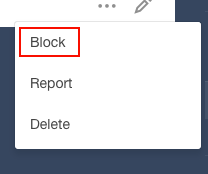
3. Click the blue ‘Block’ and this will block and anonymous messages from that IP address from getting sent to your inbox. You can still get sent messages from the actual account but not anonymous.

Voila! You have now blocked that IP address from sending you anon messages. It’s not a perfect fix but it’s something.
I hope this helps someone out there!

#how to block certain anons#anon blocking#how to#guide#how to by caroline#guide by caroline#ip address blocking#bridgerton
2K notes
·
View notes
Text
How to find your Apple TV's IPv6 address(es)
Since Apple TV's network settings don't list IPv6 info, it's time to get creative, though it won't be the hardest tech guide out there. Typically it has 2 IPv6 addresses: 1 public, and 1 private (The latter of which is used within the home's router network).
————————————————
Public IPv6 address
Download https://apps.apple.com/app/icurlhttp-appletv/id1153384808 (iCurlHTTP AppleTV)

2) Open that app. 3) In its "Browser" settings in the lower left, change from "User" to "iPhone". This is required. 4) In its address field in the upper left, write "https://ip.me". Then press the remote's OK button. 5) If it works, a row will show up a slight bit down in the text results that say "<p class="ip-address">" followed by your Apple TV's public IP.
————————————————
Private IPv6 address (i.e. within your router's LAN)
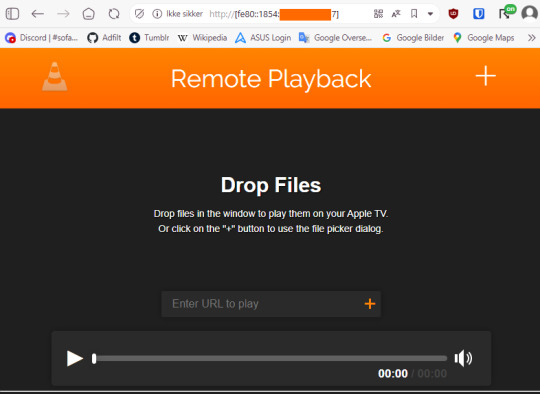
Download https://apps.apple.com/us/app/vlc-media-player/id650377962 (VLC for Apple TV)
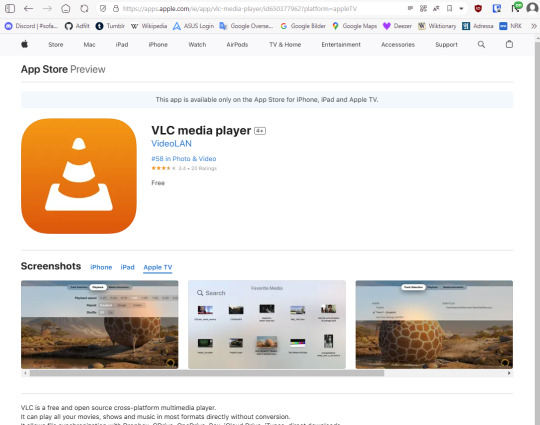
2) Open that app. 3) Go to "Remote Playback" → Click "Turn On Remote Playback" if it hasn't already been turned on. 4) The app will show a URL that it tells users to open on a non-"Apple TV device". It will usually be "http://(The Apple TV's network name in lowercase with dashes).local" Ensure that the VLC app remains on that screen throughout the entire rest of the guide. 5) On a Windows, macOS, or Linux device (Android won't work), open any sort of command line (PowerShell, Cygwin, Windows Terminal, Command Prompt, Mac Terminal, Bash, ZSH, anything you can think of like those). It is not needed to run as administrator, though nothing bad happens if you do.

6) Type "ping (the URL from step 4 but without the http:// part)", then press Enter.

7) If it works, the result will show "Pinging (URL) [(The private IP address)] with 32 bytes of data:" 8) That IP (Remove the last "%(2 numbers)" part first) can then be pasted into a browser, "http://[(The IP)]". The square brackets are required. 9) If the browser loads a "Drop files" window, then the IP works correctly.
#tech#apple tv#tvos#vlc media player#ipv6#ip address#public ip#private ip#technology#apple app store#app store#icurl#vlc#remote playback#command line#powershell#cygwin#windows terminal#tech guide#network settings
0 notes
Text
youtube
#how to change ip address on windows 10#windows 11#how to change ip address#windows 11 ip address#change ip address#networking#tech guide#how to change ip#change ip address windows 10#how to find ip address on windows 10#how to find ip address windows 11#IP address Windows 11#windows 11 how to find ip address#computer networking#IP address Windows 10#troubleshoot IP address#How to find IP address#Windows 11 tutorial#command prompt#Youtube
0 notes
Text
youtube
#LED Panel Types#VA Panels#IPS Panels#OLED Panels#QLED Panels#Mini LED Panels#QD-OLED Panels#TV Technology#Display Technology#LED TV Guide#OLED vs QLED#Best TV Panels#LED Panel Comparison#Display Tech 2024#Smart TV Guide#Advanced TV Panels#Youtube
0 notes
Text
IP Guide: Look up IP, Network, and ASN data
0 notes
Text
TrueNAS SCALE Network Configuration Tips for Home Server
TrueNAS SCALE Network Configuration Deep Dive for Home Server #homeserver #TrueNASScaleNetworkConfiguration #FailoverSetupGuide #LoadbalancingOnTrueNAS #VLANConfigurationTrueNAS #BridgeInterfaceGuide #TrueNASStaticIPAddressSetup #TrueNASSystemSettings
When you set up a TrueNAS SCALE server, one of the first configuration items you will want to tackle is the network configuration. This helps make sure you achieve optimal performance and security. If you are struggling to configure your TrueNAS SCALE home server networking, this post will help you configure a static IP address, Link Aggregation (Failover, LoadBalance, LACP), VLAN, and Bridge…
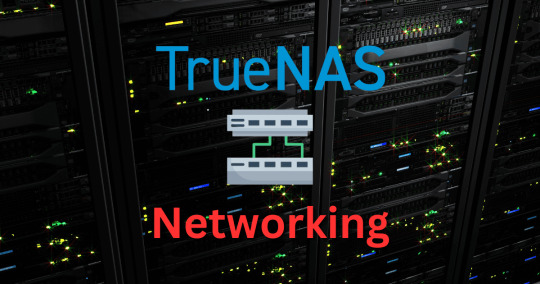
View On WordPress
#Bridge interface guide#Configure static routes#Dynamic Host Configuration Protocol#Failover setup guide#Loadbalancing on TrueNAS#Network interface configuration#Static IP address setup#TrueNAS Scale network configuration#TrueNAS system settings#VLAN configuration tutorial
0 notes
Text
so i recently tried to hack my ps2 and after everything i can say it's like, technically easy but the documentation is a godless wasteland compared to n*ntendo systems. one of the major forums has IP banned like half the world including me before i even visited it and most of the text guides are outdated but the more recent ones are 💀 video guides (also frequently outdated)
anyway so my friend and i decided to try to make a couple 3ds.hacks.guide style guides for the ps2. if you have a fat ps2 you can use the internal hdd guide and if you have a slim ps2 you can use the ESR disc method
#ps2#playstation 2#video games#gaming#retro games#lmfao i have no idea how to tag this#if you are an expert in SMB or MX4SIO or fortuna feel free to add a guide as a PR lol#j.txt
3K notes
·
View notes
Text
It all started with a mouse
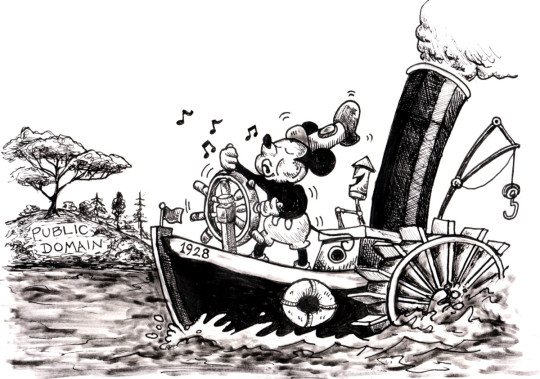
For the public domain, time stopped in 1998, when the Sonny Bono Copyright Act froze copyright expirations for 20 years. In 2019, time started again, with a massive crop of works from 1923 returning to the public domain, free for all to use and adapt:
https://web.law.duke.edu/cspd/publicdomainday/2019/
No one is better at conveying the power of the public domain than Jennifer Jenkins and James Boyle, who run the Duke Center for the Study of the Public Domain. For years leading up to 2019, the pair published an annual roundup of what we would have gotten from the public domain in a universe where the 1998 Act never passed. Since 2019, they've switched to celebrating what we're actually getting each year. Last year's was a banger:
https://pluralistic.net/2022/12/20/free-for-2023/#oy-canada
But while there's been moderate excitement at the publicdomainification of "Yes, We Have No Bananas," AA Milne's "Now We Are Six," and Sherlock Holmes, the main event that everyone's anticipated arrives on January 1, 2024, when Mickey Mouse enters the public domain.
The first appearance of Mickey Mouse was in 1928's Steamboat Willie. Disney was critical to the lobbying efforts that extended copyright in 1976 and again in 1998, so much so that the 1998 Act is sometimes called the Mickey Mouse Protection Act. Disney and its allies were so effective at securing these regulatory gifts that many people doubted that this day would ever come. Surely Disney would secure another retrospective copyright term extension before Jan 1, 2024. I had long arguments with comrades about this – people like Project Gutenberg founder Michael S Hart (RIP) were fatalistically certain the public domain would never come back.
But they were wrong. The public outrage over copyright term extensions came too late to stave off the slow-motion arson of the 1976 and 1998 Acts, but it was sufficient to keep a third extension away from the USA. Canada wasn't so lucky: Justin Trudeau let Trump bully him into taking 20 years' worth of works out of Canada's public domain in the revised NAFTA agreement, making swathes of works by living Canadian authors illegal at the stroke of a pen, in a gift to the distant descendants of long-dead foreign authors.
Now, with Mickey's liberation bare days away, there's a mounting sense of excitement and unease. Will Mickey actually be free? The answer is a resounding YES! (albeit with a few caveats). In a prelude to this year's public domain roundup, Jennifer Jenkins has published a full and delightful guide to The Mouse and IP from Jan 1 on:
https://web.law.duke.edu/cspd/mickey/
Disney loves the public domain. Its best-loved works, from The Sorcerer's Apprentice to Sleeping Beauty, Pinnocchio to The Little Mermaid, are gorgeous, thoughtful, and lively reworkings of material from the public domain. Disney loves the public domain – we just wish it would share.
Disney loves copyright's other flexibilities, too, like fair use. Walt told the papers that he took his inspiration for Steamboat Willie from Charlie Chaplin and Douglas Fairbanks, making fair use of their performances to imbue Mickey with his mischief and derring do. Disney loves fair use – we just wish it would share.
Disney loves copyright's limitations. Steamboat Willie was inspired by Buster Keaton's silent film Steamboat Bill (titles aren't copyrightable). Disney loves copyright's limitations – we just wish it would share.
As Jenkins writes, Disney's relationship to copyright is wildly contradictory. It's the poster child for the public domain's power as a source of inspiration for worthy (and profitable) new works. It's also the chief villain in the impoverishment and near-extinction of the public domain. Truly, every pirate wants to be an admiral.
Disney's reliance on – and sabotage of – the public domain is ironic. Jenkins compares it to "an oil company relying on solar power to run its rigs." Come January 1, Disney will have to share.
Now, if you've heard anything about this, you've probably been told that Mickey isn't really entering the public domain. Between trademark claims and later copyrightable elements of Mickey's design, Mickey's status will be too complex to understand. That's totally wrong.

Jenkins illustrates the relationship between these three elements in (what else) a Mickey-shaped Venn diagram. Topline: you can use all the elements of Mickey that are present in Steamboat Willie, along with some elements that were added later, provided that you make it clear that your work isn't affiliated with Disney.
Let's unpack that. The copyrightable status of a character used to be vague and complex, but several high-profile cases have brought clarity to the question. The big one is Les Klinger's case against the Arthur Conan Doyle estate over Sherlock Holmes. That case established that when a character appears in both public domain and copyrighted works, the character is in the public domain, and you are "free to copy story elements from the public domain works":
https://freesherlock.files.wordpress.com/2013/12/klinger-order-on-motion-for-summary-judgment-c.pdf
This case was appealed all the way to the Supreme Court, who declined to hear it. It's settled law.
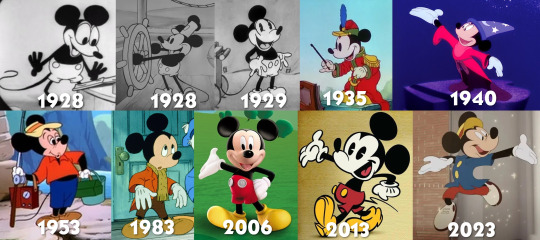
So, which parts of Mickey aren't going into the public domain? Elements that came later: white gloves, color. But that doesn't mean you can't add different gloves, or different colorways. The idea of a eyes with pupils is not copyrightable – only the specific eyes that Disney added.
Other later elements that don't qualify for copyright: a squeaky mouse voice, being adorable, doing jaunty dances, etc. These are all generic characteristics of cartoon mice, and they're free for you to use. Jenkins is more cautious on whether you can give your Mickey red shorts. She judges that "a single, bright, primary color for an article of clothing does not meet the copyrightability threshold" but without settled law, you might wanna change the colors.
But what about trademark? For years, Disney has included a clip from Steamboat Willie at the start of each of its films. Many observers characterized this as a bid to create a de facto perpetual copyright, by making Steamboat Willie inescapably associated with products from Disney, weaving an impassable web of trademark tripwires around it.
But trademark doesn't prevent you from using Steamboat Willie. It only prevents you from misleading consumers "into thinking your work is produced or sponsored by Disney." Trademarks don't expire so long as they're in use, but uses that don't create confusion are fair game under trademark.
Copyrights and trademarks can overlap. Mickey Mouse is a copyrighted character, but he's also an indicator that a product or service is associated with Disney. While Mickey's copyright expires in a couple weeks, his trademark doesn't. What happens to an out-of-copyright work that is still a trademark?
Luckily for us, this is also a thoroughly settled case. As in, this question was resolved in a unanimous 2000 Supreme Court ruling, Dastar v. Twentieth Century Fox. A live trademark does not extend an expired copyright. As the Supremes said:
[This would] create a species of mutant copyright law that limits the public’s federal right to copy and to use expired copyrights.
This elaborates on the Ninth Circuit's 1996 Maljack Prods v Goodtimes Home Video Corp:
[Trademark][ cannot be used to circumvent copyright law. If material covered by copyright law has passed into the public domain, it cannot then be protected by the Lanham Act without rendering the Copyright Act a nullity.
Despite what you might have heard, there is no ambiguity here. Copyrights can't be extended through trademark. Period. Unanimous Supreme Court Decision. Boom. End of story. Done.
But even so, there are trademark considerations in how you use Steamboat Willie after Jan 1, but these considerations are about protecting the public, not Disney shareholders. Your uses can't be misleading. People who buy or view your Steamboat Willie media or products have to be totally clear that your work comes from you, not Disney.

Avoiding confusion will be very hard for some uses, like plush toys, or short idents at the beginning of feature films. For most uses, though, a prominent disclaimer will suffice. The copyright page for my 2003 debut novel Down and Out in the Magic Kingdom contains this disclaimer:
This novel is a work of fiction, set in an imagined future. All the characters and events portrayed in this book, including the imagined future of the Magic Kingdom, are either fictitious or are used fictitiously. The Walt Disney Company has not authorized or endorsed this novel.
https://us.macmillan.com/books/9781250196385/downandoutinthemagickingdom
Here's the Ninth Circuit again:
When a public domain work is copied, along with its title, there is little likelihood of confusion when even the most minimal steps are taken to distinguish the publisher of the original from that of the copy. The public is receiving just what it believes it is receiving—the work with which the title has become associated. The public is not only unharmed, it is unconfused.
Trademark has many exceptions. The First Amendment protects your right to use trademarks in expressive ways, for example, to recreate famous paintings with Barbie dolls:
https://www.copyright.gov/fair-use/summaries/mattel-walkingmountain-9thcir2003.pdf
And then there's "nominative use": it's not a trademark violation to use a trademark to accurately describe a trademarked thing. "We fix iPhones" is not a trademark violation. Neither is 'Works with HP printers.' This goes double for "expressive" uses of trademarks in new works of art:
https://en.wikipedia.org/wiki/Rogers_v._Grimaldi
What about "dilution"? Trademark protects a small number of superbrands from uses that "impair the distinctiveness or harm the reputation of the famous mark, even when there is no consumer confusion." Jenkins says that the Mickey silhouette and the current Mickey character designs might be entitled to protection from dilution, but Steamboat Willie doesn't make the cut.
Jenkins closes with a celebration of the public domain's ability to inspire new works, like Disney's Three Musketeers, Disney's Christmas Carol, Disney's Beauty and the Beast, Disney's Around the World in 80 Days, Disney's Alice in Wonderland, Disney's Snow White, Disney's Hunchback of Notre Dame, Disney's Sleeping Beauty, Disney's Cinderella, Disney's Little Mermaid, Disney's Pinocchio, Disney's Huck Finn, Disney's Robin Hood, and Disney's Aladdin. These are some of the best-loved films of the past century, and made Disney a leading example of what talented, creative people can do with the public domain.
As of January 1, Disney will start to be an example of what talented, creative people give back to the public domain, joining Dickens, Dumas, Carroll, Verne, de Villeneuve, the Brothers Grimm, Twain, Hugo, Perrault and Collodi.
Public domain day is 17 days away. Creators of all kinds: start your engines!

If you'd like an essay-formatted version of this post to read or share, here's a link to it on pluralistic.net, my surveillance-free, ad-free, tracker-free blog:
https://pluralistic.net/2023/12/15/mouse-liberation-front/#free-mickey

Image: Doo Lee (modified) https://web.law.duke.edu/sites/default/files/images/centers/cspd/pdd2024/mickey/Steamboat-WIllie-Enters-Public-Domain.jpeg
CC BY 4.0 https://creativecommons.org/licenses/by/4.0/deed.en
#pluralistic#copyfight#scotus#mickey mouse#public domain#ip#contract#trademark#tm#jennifer jenkins#copyright#disney#nominative use
6K notes
·
View notes
Text
Smart IPTV Comment ça marche ? Installation et Activation de l’application Smart IPTV sur Samsung, LG ou Smart TV

#Comment fonctionne IPTV ?#L’IPTV comment ça marche ? Pour profiter des abonnements Smart IPTV sur Samsung TV#LG TV et autres télévisions smart TV#il est généralement nécessaire d’utiliser l’application Smart IP TV.#mais l’abonnement et l’activation du programme restent inchangés.#QU’EST-CE QUE L’APPLICATION SMART IPTV PREMIUM ?#INSTALLER ET ACTIVER L’APPLICATION ABONNEMENT SMART IP TV SUR VOTRE SAMSUNG SMART TV?#SMART IPTV#communément appelé Siptv#est un lecteur IPTV avec EPG (Electronic Program Guide) qui vous donne un accès facile aux chaînes IPTV que vous souhaitez.#Cependant#comme déjà mentionné sur leur site officiel#SIPTV ne contient pas de chaînes#vous devrez donc ajouter les vôtres via un abonnement au service IPTV. Certaines âmes confuses supposent que l’application sera chargée de#mais ce n’est pas le cas.#Ceux qui souhaitent profiter des avantages de l’utilisation de cette application devront ajouter leurs propres chaînes. Mais avant d’essaye#vous devez apprendre à installer SIPTV sur vos appareils préférés#car cela nécessite un peu de travail.#Sur certains appareils#l’installation de cette application est aussi simple que l’installation d’une application sur votre téléphone#mais certaines autres plates-formes vous obligent à faire un peu plus pour que cette application soit opérationnelle.#De plus#toutes les plates-formes ne sont pas prises en charge#vous devez donc garder à l’esprit les appareils pris en charge par Smart IP TV sur pc avant de vous y plonger.#pour plus de détails INSTALLER ET ACTIVER L’APPLICATION SMART IP TV SUR VOTRE SAMSUNG SMART TV#pour acheter code smart pro IPTV abonnement visitez notre boutique ici: SMART IP TV PLAN.#SMART TV IPTV COMPATIBLE AVEC :#SAMSUNG TV#IPTV BOX#APPLE TV
1 note
·
View note
Text
max thoughts: baby making
an: little blurb i wrote today after i dreamed i was pregnant. 1.9k warnings: name calling (?), cum inside (obv), fingering, butt plug overstimulation.

You had been waiting for Max to get home since he told you he had landed in Nice, all dressed up in the sexiest little nightgown and matching crotchless panties.
“Ugh, Maxie, finally.” You ran to the door when he unlocked it from the outside. “Here, drink this” you handed him a open can of redbull as you took his bags for him, throwing them all on the floor.
“What? Redbull? Baby what-?” he stood confused in front of you.
“I was ovulating this week, tonight’s the last night, need you to fuck me now. Drink”
“Now, now?” he asked, shocked by your frantic state.
“Now, so you can give me as many as you can. I’ll be in the bedroom”
“‘kay, i’m coming” he told you as you were already making your way to the bedroom.
He started taking his clothes off by the door as he tried to drink the redbull. By the time he reached the room he had half downed half of the can but still had his underwear and shirt on.
Max had to stop his rushing when he opened the door though. You were on the edge of the bed, your ass in the air and face buried in the pillows as you arched, the crotchless panties giving him a view of your already wet folds.
“Fuck,” he sighed, setting down the can and taking off his shirt, “do I get this every time, now?”
“I’ll think about it if you give me three loads tonight”
“You’ll kill me” he walked over to you and his palm met your exposed ass with a slap, caressing it after the impact.
“Take off your underwear, Max.” you turned around sitting on the edge of the bed as you watched him strip completely. “Want me to take this off?” you asked, referring to your top.
“Keep it on”
You pulled him closer to you by the hips, your hand reached for his hardening cock and led it to your mouth. Your tongue darted out to lick at his tip then meet the base and drag all the way back up. He closed his eyes in pleasure, hand reaching to comb your hair out of your face but as soon as you felt him hard enough you pulled away and he whined.
“You know what we’re here for, come on. No complaining when you get to fuck me raw and come inside.”
“I hate you so much. Right, lay down.” He watched as you got comfortable, spreading your legs up for him. He could see your glistening middle as you looked ip at him. “Were you doing something?” he asked before swiping his finger between your folds and taking it to his mouth.
“Maybe. I was watching something, to keep myself ready for you”
“I think you’re going too far” he chuckled as he laid his body over yours, kissing your neck as his hand guided his cock into you.
You both groaned when he filled you up, you pressed his ass with your feet, making him go deeper. You started moving your hips up but Max stopped you, holding them down so he could fuck your properly.
He stood back up and started snapping his hips against yours. He had built up the pace to fast thrusts, using you to get himself off, just like you wanted. Your legs had been thrown over his shoulders so he could fuck as deep as possible into you.
Max tugged on your flimsy top, pulling until your tits popped out, he watched them bounce with every thrust of his hips. His hand reached out for them, feeling the soft flesh against his palm before he bent over your body.
“Fuck, baby, ‘m not gonna last” he whined against your neck.
“Don’t want you to, ‘t’s okay. Fill me up, Maxie”
One of your hands caressed the short hair on the back of his head as the other slipped between your bodies to reach your clit. He slowed his thrusts, making his movements deeper, the tip of his cock hitting your cervix perfectly as you felt your orgasm build up.
“Fuck” he groaned, dragged out as he came inside you.
You held him in place with your leg as you moved your hips in circles, chasing your orgasm as his hand replaced yours in your clit. His agile fingers quickly bringing you to spasm and release around him.
“Stay for a second” you plead as you held him close to you.
“Baby, my legs are giving up” he chuckled, his breath tickling your neck and making you let go.
Max pulled out and stood up, helping you up the bed before he laid on his side, next to you. You pulled his face down to kiss him, quickly shoving your tongue into his mouth and running your nails down his chest.
“Give me a second, love” he chuckled as his own hand ran down your chest to your stomach. “Lemme take this off”
He tugged on your panties and helped you pull them down till you were kicking them off. His lips met your neck, slowly covering the skin with kisses while his fingers reached between your folds. He collected the cum that was starting to spill out of you and pushed it back inside, the action making your back arch off the bed.
“Max” you whined “I don’t need this, need you to fuck me again”
“No? Thought the contractions of the orgasm helped the sperm in” he teased, kissing the side of your face as he worked his fingers inside you.
“You’re the biggest turn off ever.”
“Yet you’re here, trying to hold your moans back” he kissed you to shut you up, curling his fingers to make you squirm around him.
He always worked you so well with his fingers, knowing all your cues, when to curl, where to press, he was just perfect at making you feel good. So it was no surprise when you pulled away from his kiss to moan.
“So fucking close, Max” you whined
“I know, baby. Don’t hold back, come for me”
His raspy voice and the way his beard was rubbing against your neck threw you over the edge as his fingers pressed your gspot. You bit your lip to stop the loud moans that would come out of your mouth, soft grunts coming out instead.
“So fucking pretty for me.” he kissed your face, flipping on top of you. “Want me to fuck you again, love?”
“Please” you sighed, pulling his neck down to kiss him again.
His movements this time were slower and calmer. He kissed you through it, the entire time, your hands wrapping around his tiny waist and making their way up to his broad shoulders, the way your nails dragged on his skin driving him crazy.
Moans were flowing from your mouth to his and vice versa, everything almost too intense. The combination of touches and feelings making your muscles tense up as you felt your third orgasm approaching.
You came together, intensifying each others pleasure as you moved slowly to ride down your highs. You smiled as he kissed you, making him smile too and pull away, to look down at you.
“I’m never letting you shave again. I love this.” you told him, running your hand on his jaw.
He just nodded, letting his body fall on top of yours, his face settling on the crook of your neck. He only got up after a couple minutes.
“I’m gonna get water and a snack so we don’t pass out.”
“Can you bring me some grapes?” you asked purposefully and he nodded, leaving the room.
You knew Max was planning to be done after the second round so you came up with a better plan. You asked for the grapes because they were hidden in the back of the fridge, still unopened and unwashed so he’d take sometime with that.
That’s the time you needed to give him a little motivation.
You opened the drawer on your side of the bed and pulled out a bottle of lube and a heart shaped but plug, small so you could quickly take it. You tried to be as fast and efficient as you could with your prep and in minutes you had it in. So you positioned yourself like you were when he first walked in and waited.
It didn’t take too long before Max opened the door. He almost dropped the water bottles and the bow he had in his hands.
“Fuck, baby” he groaned “I can’t”
“What?” you turned your head to look at him immediately
“It’s really tempting but i don’t think i can, love”
“Of course you can, Maxie. Please, i need you to.” you begged you the whiniest voice as he approached you.
“Sit up, baby”
You obeyed and winced when your ass met the mattress, making the plug dig deeper inside you which made Max’s cock twitch.
“Max, we’re never gonna have a baby if you don’t put enough effort into it.” you said, running your hands over his hips and love handles.
“I’m pretty sure people can have babies without fucking three times in a row. You’re just a fucking whore” he told you, tilting your head up with a hand on your chin to make you look at him.
“I’m your whore, though. And I’m so fucking horny, baby. So ready for you.”
“Turn around. You wanna bend over or get on your knees?”
You smiled and settled back into position, arching as much as you could for him. Max watched and you swayed your ass in the air for him and reached out. His thumb pushed the plug like it was a button, making you whine and push back against his hand.
“Fuck! Some day i’m gonna actually be able to tell you no” he sighed and caressed your ass.
His hand slipped up your back, bunching up your nightgown so he could see the curve of your spine and your waist. He started kissing the same trail his hand took as his other worked on getting his cock ready for you.
“You know you’re gonna make me cum so quick” he sighed as he tapped the tip of his cock on your cunt.
“As long as you cum inside me”
Max threw his head back as he pushed into you, the stimulation on his spent cock almost too much. He stopped for a second so he didn’t burst before starting to move his hips. He was being incredibly and unnecessarily slow, dragging his cock in and out of you and watching as his previous release coated him and spilled out of you with every thrust.
You got impatient and started fucking yourself on him, rolling your hips as you moved back onto him and your fingers played with your clit. His moans were coming out in grunts as he squeezed your waist.
“Baby, slow down” he whined.
You let out a negative groan in response, your fingers speeding up on your clit. You kept on fucking yourself on him till he came with a ridiculously loud moan, the pumping of his cock triggering your own orgasm. You too came with a loud moan and your knees completely gave out, making you fall on the bed, Max slipping out of you.
He just let himself fall on the bed too, right next to you, his hand brushing the sweaty hair off your face.
“Done?” he asked and you nodded “Good, I’m so done. Are you okay?”
“Do you think we did it this time?” you mumbled
“Relax, baby. Don’t worry about it, we have all the time in the world.” he told you before kissing your forehead and falling asleep almost instantly — he could deal with the mess later.
#mv1 smut#mv1 imagine#mv1 x reader#max verstappen imagine#max verstappen x reader#max verstappen smut#a writes#thoughts
540 notes
·
View notes